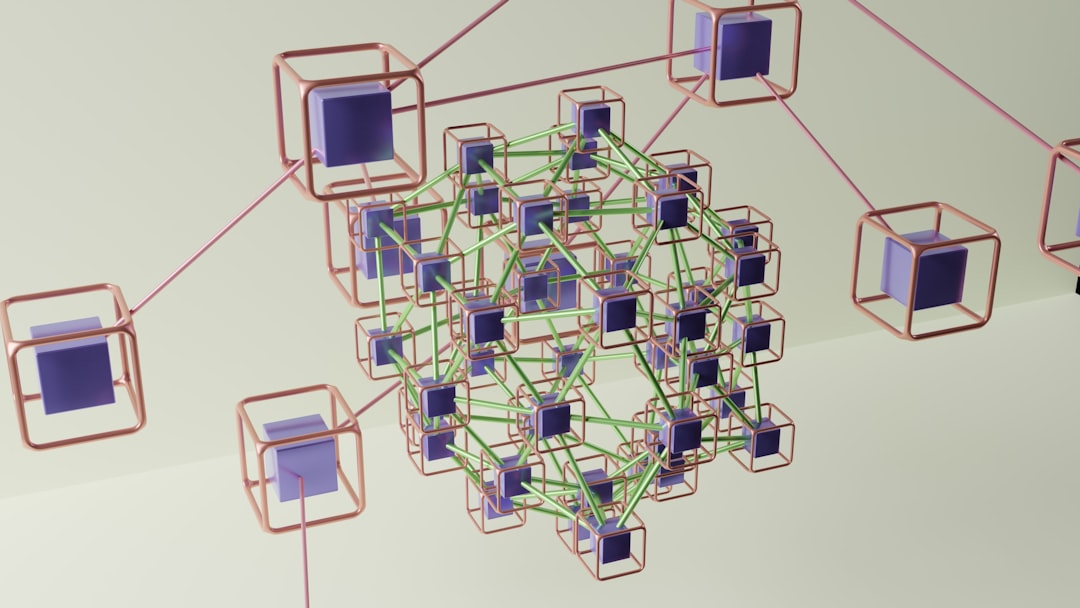Understanding GPU Clusters: Architecture, Node Configuration, and AI/ML Use Cases

Discover the intricacies of GPU cluster architecture, explore optimal node configurations, and understand how high-performance GPU clusters are revolutionizing AI and machine learning workloads.
Introduction to GPU Clusters
In today’s data-driven landscape, organizations across various industries are harnessing the power of GPU clusters to manage massive datasets, accelerate artificial intelligence (AI) workloads, and enhance high-performance computing (HPC) capabilities. A GPU cluster architecture comprises a network of interconnected graphics processing units (GPUs) working collaboratively to perform complex computations at speeds that significantly surpass traditional central processing unit (CPU) clusters.
Unlike CPUs, which excel at sequential processing, GPUs are designed for parallel computing. This makes them particularly well-suited for tasks such as AI, machine learning (ML), big data analytics, and high-resolution graphics rendering. By distributing computational workloads across multiple GPUs, GPU clusters enable organizations to handle data-intensive tasks efficiently and at unprecedented speeds.
Understanding GPU Cluster Architecture & Key Components
What Are GPU Nodes and How Do They Work?
At the heart of any GPU cluster architecture are the GPU nodes. Each GPU node is an individual server equipped with one or more GPUs, CPUs, memory, and storage. These nodes collaborate to process workloads by distributing computational tasks across multiple GPUs, facilitating parallel processing that enhances overall performance.
The efficiency of GPU nodes is pivotal in managing the high-speed processing demands of AI models and data-intensive applications. High-bandwidth memory and optimized interconnects, such as NVLink or InfiniBand, ensure seamless data exchange between GPUs, CPUs, and storage devices, minimizing latency and maximizing throughput.
Key Components of a GPU Cluster
A robust GPU cluster architecture includes several key components that work in harmony to maximize computational power, scalability, and efficiency:
- GPUs: The backbone of the cluster, providing the necessary processing power for parallel computations.
- CPUs: Handle general-purpose processing tasks and coordinate the activities of GPUs within each node.
- Memory: High-bandwidth memory (HBM) allows GPUs to process large datasets efficiently, reducing dependency on slower system memory.
- Storage: Fast storage solutions like NVMe SSDs optimize data access speeds, ensuring quick retrieval and storage of data.
- Networking: High-speed interconnects enable rapid data transfer between nodes, essential for maintaining cluster performance.
- Management Software: Tools like Kubernetes or Slurm orchestrate resource allocation, job scheduling, and overall cluster management.
Types of GPU Clusters & Deployment Models
GPU clusters come in various configurations and deployment models, each tailored to specific computational needs and infrastructure strategies:
- On-Premises GPU Clusters: Located within an organization’s own data centers, offering greater control over hardware and data security.
- Cloud-Based GPU Clusters: Hosted on cloud platforms, providing scalability and flexibility without the need for significant upfront hardware investments.
- Hybrid GPU Clusters: Combine on-premises and cloud-based resources, allowing organizations to optimize costs and performance based on workload demands.
When designing a GPU cluster architecture, organizations must consider factors such as scalability, cost, workload optimization, and specific application requirements to determine the most suitable deployment model.
How to Build a GPU Cluster
Creating an efficient GPU cluster architecture requires meticulous planning and the right combination of hardware, networking, and software components. Here’s a step-by-step approach to building a high-performance GPU cluster:
- Select Appropriate GPUs: Choose GPUs that align with your specific workloads. For AI and ML tasks, NVIDIA’s A100 or H100 models are excellent choices, offering unparalleled computational power.
- High-Speed Networking: Implement high-speed interconnects like NVLink or InfiniBand to facilitate rapid data transfer between nodes.
- Fast Storage Solutions: Deploy NVMe SSDs for quick data access and tiered storage strategies to balance cost and efficiency, storing frequently accessed data on SSDs and less critical data on HDDs.
- Management Software: Utilize management tools such as Kubernetes for orchestration and Slurm for job scheduling to streamline cluster operations.
- Monitoring and Scaling: Implement centralized monitoring tools to track performance metrics and scale the cluster as needed to handle increasing workloads.
By adhering to best practices in GPU cluster design, organizations can build a robust, scalable, and cost-effective infrastructure tailored to their computational needs.
Real-World Use Cases of GPU Clusters
GPU clusters are transforming various industries by providing the computational power necessary for innovation and efficiency. Here are some real-world applications:
- Artificial Intelligence and Machine Learning: Accelerating the training of deep learning models, enabling real-time analytics, and enhancing natural language processing capabilities.
- Healthcare: Facilitating patient data analysis, medical imaging, and genomics research, leading to faster diagnostics and personalized treatments.
- Finance: Improving risk assessment, fraud detection, and algorithmic trading through real-time data processing and predictive analytics.
- Manufacturing and Logistics: Enhancing predictive maintenance, supply chain optimization, and automation processes.
- Scientific Research: Enabling high-performance simulations, data analysis, and computational modeling in fields like physics, chemistry, and environmental science.
These use cases demonstrate the versatility and critical importance of GPU cluster architecture in driving advancements across multiple sectors.
Future Trends in GPU Cluster Technology
The landscape of GPU cluster architecture is continually evolving, driven by advancements in hardware, the rise of edge computing, and AI-driven optimization. Here are some emerging trends shaping the future of GPU clusters:
Advancements in GPU Hardware
GPU technology is advancing rapidly, with new hardware releases pushing the boundaries of performance and efficiency. Innovations such as NVIDIA’s H100 and AMD’s Instinct series are designed to handle the most demanding workloads, offering enhanced computational capabilities and energy efficiency. These advancements provide organizations with more options to tailor their GPU cluster architecture based on specific performance and budget requirements.
The Rise of Edge Computing & Distributed GPU Clusters
Edge computing is becoming increasingly prevalent, requiring GPU clusters to be deployed closer to data sources for real-time processing. Distributed GPU clusters in edge environments offer low-latency solutions, enabling applications like autonomous vehicles, smart cities, and industrial IoT. This trend emphasizes the need for compact, high-performance GPU systems that can operate effectively in decentralized locations, reducing reliance on centralized data centers.
AI-Driven Optimization of GPU Workloads
Artificial intelligence is playing a pivotal role in optimizing GPU workloads. AI-driven tools are being developed to automatically adjust resource allocation, predict workload demands, and enhance energy efficiency within GPU clusters. These intelligent management solutions ensure that GPU resources are utilized effectively, minimizing idle times and operational costs while maximizing performance. As AI-driven optimization technologies mature, they will become integral to efficient GPU cluster architecture.
Conclusion
A well-designed GPU cluster architecture is essential for organizations seeking to leverage high-performance computing and AI capabilities. By understanding the key components, deployment models, and emerging trends, businesses can build robust GPU clusters that drive innovation and efficiency across various applications. NetMind AI Solutions offers customizable AI integration options and scalable GPU cloud infrastructure, empowering enterprises to harness the full potential of GPU clusters for their unique needs.
Ready to transform your AI infrastructure? Discover how NetMind can elevate your GPU cluster architecture and AI capabilities today.
Frequently Asked Questions
What industries benefit the most from GPU clusters?
Industries such as AI/ML, healthcare, finance, manufacturing, logistics, retail, and scientific research leverage GPU clusters for tasks like deep learning, real-time analytics, risk assessment, predictive maintenance, and complex simulations.
What are GPU nodes, and how do they function in a cluster?
GPU nodes are individual servers equipped with GPUs, CPUs, memory, and storage. They distribute workloads across multiple GPUs, enabling parallel processing. High-speed interconnects like NVLink and InfiniBand ensure efficient communication within the cluster.
How does GPU memory impact cluster performance?
High-bandwidth memory (HBM) and large VRAM allow GPUs to process large datasets efficiently, reducing bottlenecks by minimizing reliance on slower system memory and storage.
How do storage solutions affect GPU cluster efficiency?
Fast storage solutions like NVMe SSDs ensure quick data access, while tiered storage strategies balance cost and efficiency by storing frequently accessed data on SSDs and less critical data on HDDs.
How do you set up a high-performance GPU cluster?
Select GPUs suited for your workload, implement high-speed networking, deploy fast and tiered storage solutions, install management software like Kubernetes or Slurm, and continuously monitor and scale the cluster to optimize performance.
What software and frameworks are used for managing GPU clusters?
Popular tools include Kubernetes for orchestration, Slurm for job scheduling, CUDA & ROCm for GPU programming, and AI/ML frameworks like TensorFlow, PyTorch, and JAX.
How will AI-driven optimization impact GPU clusters?
AI-driven optimization will automate resource allocation, predict workload demands, enhance energy efficiency, and enable features like automated scaling and self-healing infrastructure, thereby improving performance and reducing operational costs.
Discover how to transform your AI infrastructure with NetMind AI Solutions. Visit us today.




